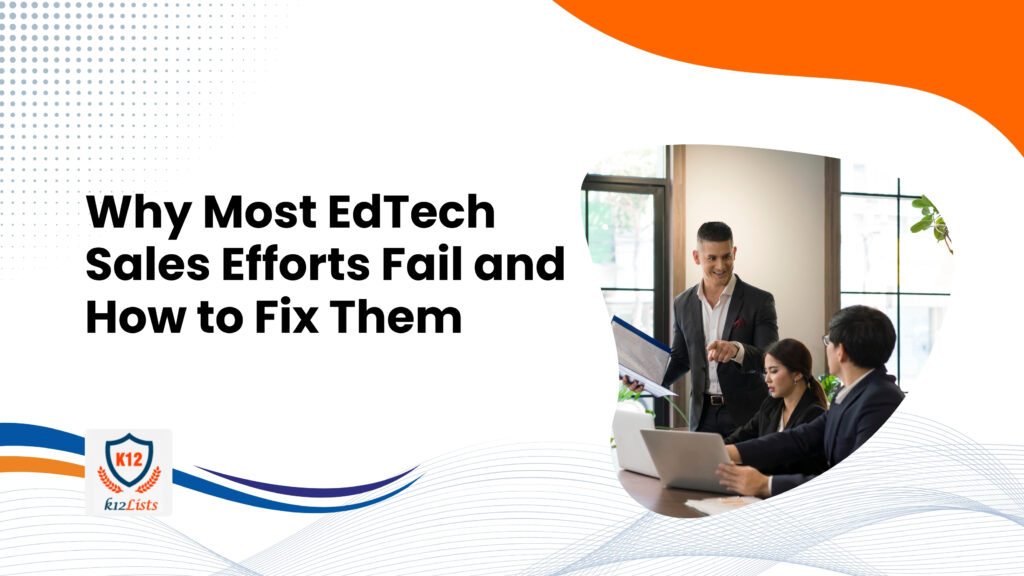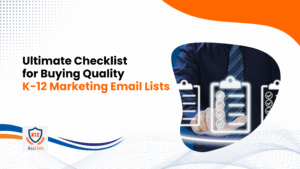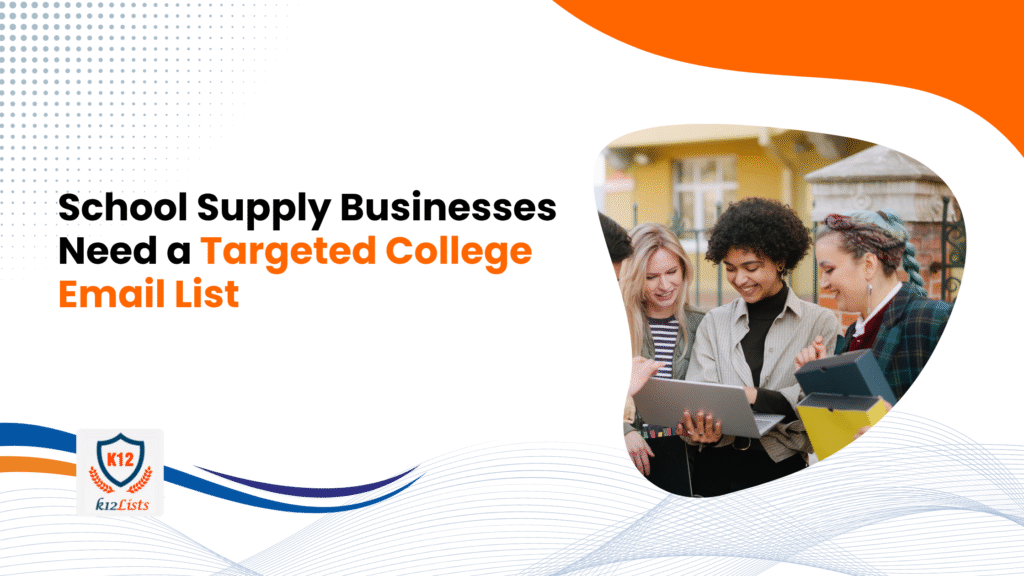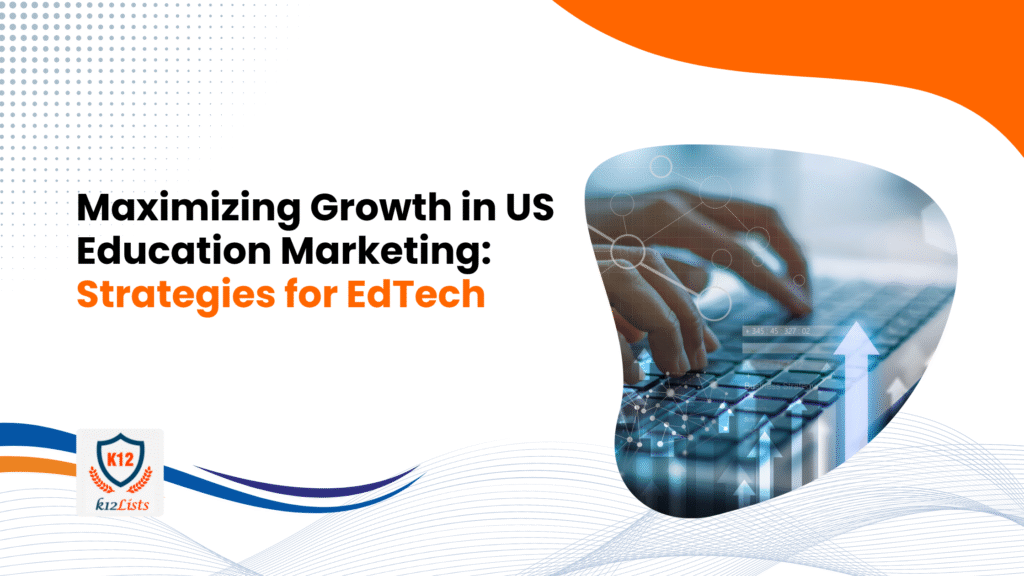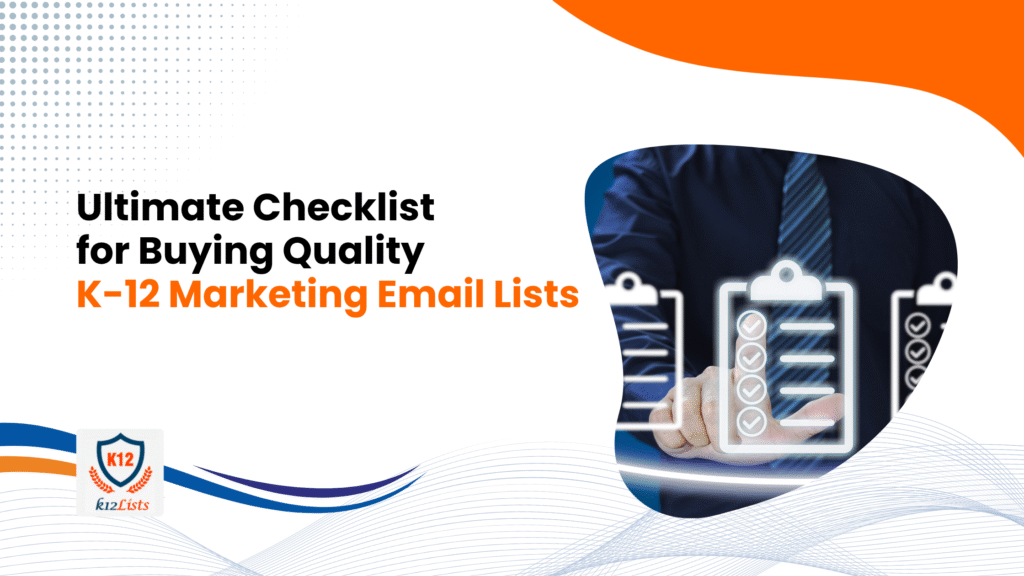Most EdTech sales campaigns stumble because they don’t fully understand the varied needs of students and educators. Many products lack a solid market fit and miss connecting with the right decision-makers. Additionally, outdated marketing strategies limit their reach and impact. To succeed, you must deeply research your market, align your solutions with genuine needs, and focus your sales efforts precisely.
Let’s be honest.
Most EdTech companies invest heavily in sales teams, cold outreach, and high-profile campaigns—but see little response in return.
- Emails go unanswered.
- Meetings don’t convert.
- Deals stall before contracts are signed.
Sound familiar? You’re not alone.
According to HolonIQ, a top global education market intelligence platform, over 60% of EdTech startups can’t scale their sales beyond early adopters. Many had excellent products, but flawed sales approaches killed their momentum.
Here’s why most EdTech sales efforts fail and how to fix EdTech sales problems in 2025.
1. Targeting the Wrong EdTech Decision-Makers
An AI-powered math platform startup spent 8 months pitching principals. The problem? Principals don’t decide on curriculum. That role belongs to district-level curriculum coordinators. By the time the startup adjusted, competitors had signed contracts.
- Selling cybersecurity software to a curriculum coordinator wastes efforts.
- Pitching STEM curriculum to the IT director? Same issue.
Fix it:
Chart the decision-making process in K-12 and higher education systems. Use a segmented, verified education email list to connect with the right roles. Tailor your messages to the unique challenges of each decision-maker.
Case study: After refocusing on curriculum directors, one EdTech firm boosted demo bookings by 42% in one quarter.
2. Using Outdated or Generic Contact Lists
Bad data kills EdTech sales faster than a poor pitch. One company bought a “cheap education list” and suffered a 38% bounce rate in their outreach. Their email domain was flagged, shutting off warm leads.
- Old emails = bounced messages.
- Generic contacts = ignored emails.
- Compliance missteps = spam traps and blacklisting.
Fix it:
Insist on fresh, verified education contact databases, updated quarterly. Always segment by role, location, and school type.
Example: Switching to a verified K-12 email list, segmented by state and position, dropped bounce rates below 2% and lifted reply rates by 31% in two months.
3. Ignoring Regional EdTech Sales Differences
Many EdTech sales efforts fail because they treat all regions alike, ignoring differences in school systems, regulations, and decision-makers’ titles.
- Selling to U.S. schools ≠ selling to APAC or Middle East institutions.
- In the U.S., superintendents typically approve large purchases.
- In India, regional education boards wield power.
- In the Middle East, Ministry of Education sign-off is key.
Fix it:
Localize your sales strategy by aligning with regional education systems. Work with data providers familiar with local markets. Tailor tone, compliance, and pitches accordingly.
4. Weak Personalization in EdTech Sales Outreach
Most EdTech emails are generic:
“Hi [First Name], we help schools improve learning outcomes with our innovative platform.”
This could be sent to 10,000 schools and ignored by all.
Fix it:
Reference specifics like school size, funding type, or location. Show success stories of similar schools. Use enriched data points such as technology adoption or enrollment numbers.
Example: A digital STEM kit seller segmented schools by size—small rural versus large urban—and personalized outreach accordingly:
- For small schools: “Save teachers 10 hours a week with ready-to-use STEM kits.”
- For large schools: “Standardize STEM learning across 50+ classrooms with minimal admin work.”
This boosted response rates by 50%.
5. No Clear, Data-Driven ROI Story
Educators want outcomes, not your product features. Will your solution save teachers time? Improve student results? Reduce costs?
One EdTech company’s pitch deck was flooded with screenshots. When they switched to:
- “Our platform saves teachers 8 hours/month grading.”
- “Schools save up to $20,000/year on admin costs.”
Their conversions doubled.
Fix it:
Shift from “what your product does” to “what results it delivers.” Highlight time savings, regulatory compliance, funding compatibility. Use real case studies backed by numbers.
Final Thoughts: Smarter EdTech Selling in 2025
Buying an education contact database is more than acquiring emails—it’s about partnering with providers ensuring accuracy, compliance, and relevance. The right database connects you with real decision-makers across regions. This is how to maximize your EdTech marketing ROI.
The secret to success isn’t harder selling—it’s smarter selling:
- Use verified education contact databases.
- Segment outreach by role and region.
- Personalize messaging with a focus on ROI and outcomes.
Do this, and you’ll move from ignored emails to booked demos, and from stalled deals to signed contracts.
Case in point: One EdTech company went from mass emails to data-driven, segmented campaigns. Within 6 months, their demo-to-close rate soared from 12% to 29%.
Ready to boost your EdTech sales in 2025?
Contact us today for a fresh, accurate education contact database that delivers real results.
Frequently Asked Questions (FAQ’s)
Why do most EdTech sales efforts fail?
Most fail due to targeting the wrong decision-makers, using outdated contact lists, ignoring regional differences, weak personalization, and lacking a clear ROI story.
How can EdTech companies improve their sales outreach?
They should use verified, segmented education contact databases, localize messaging by region, tailor outreach with specific pain points, and highlight clear, data-backed ROI.
Who are the key decision-makers in EdTech sales?
Decision-makers vary by region but often include district curriculum coordinators, superintendents, IT directors, and regional education boards rather than just school principals.
What is the importance of using a verified education contact database?
Verified databases reduce bounce rates, improve deliverability, ensure compliance, and help reach the right contacts for higher response and conversion rates.
How does personalization affect the success of EdTech sales campaigns?
Personalization – such as referencing school size, funding model, or regional specifics-makes outreach more relevant, increasing response rates and building trust with prospects.

